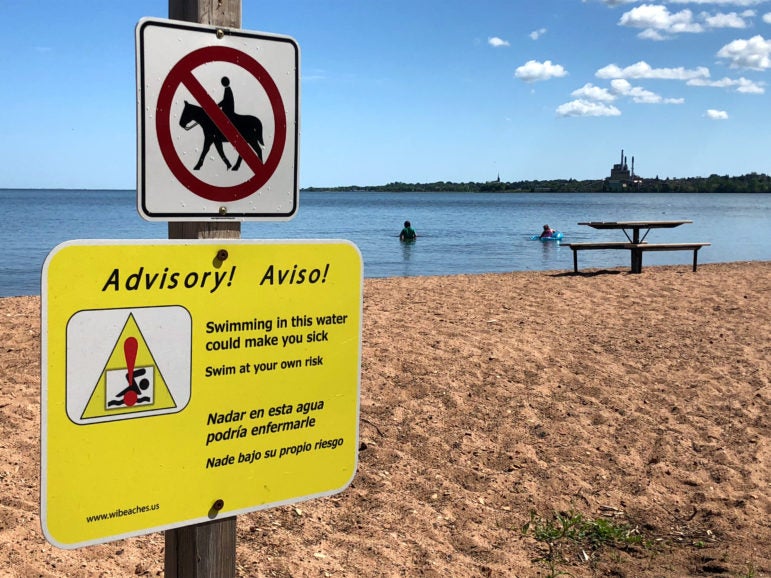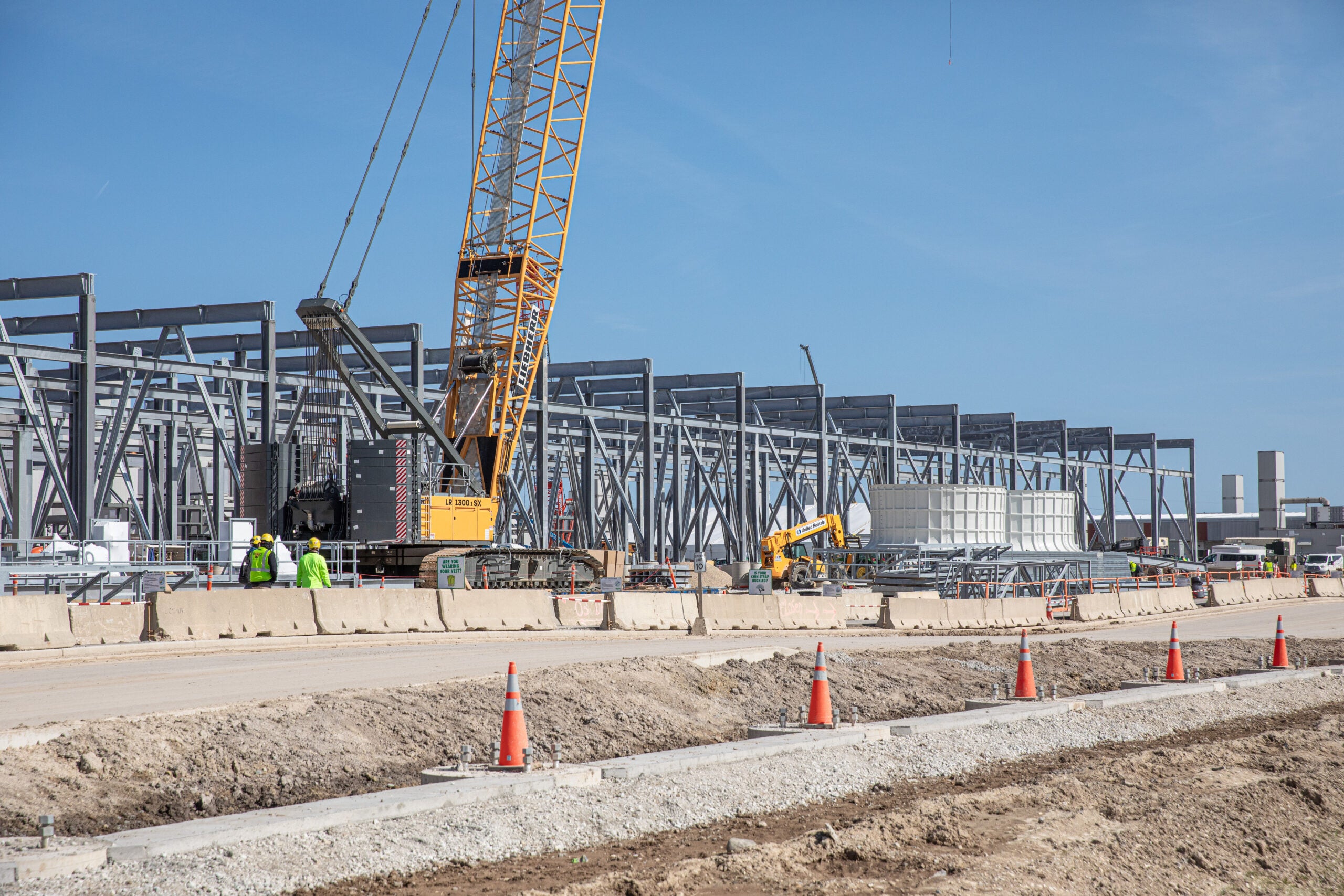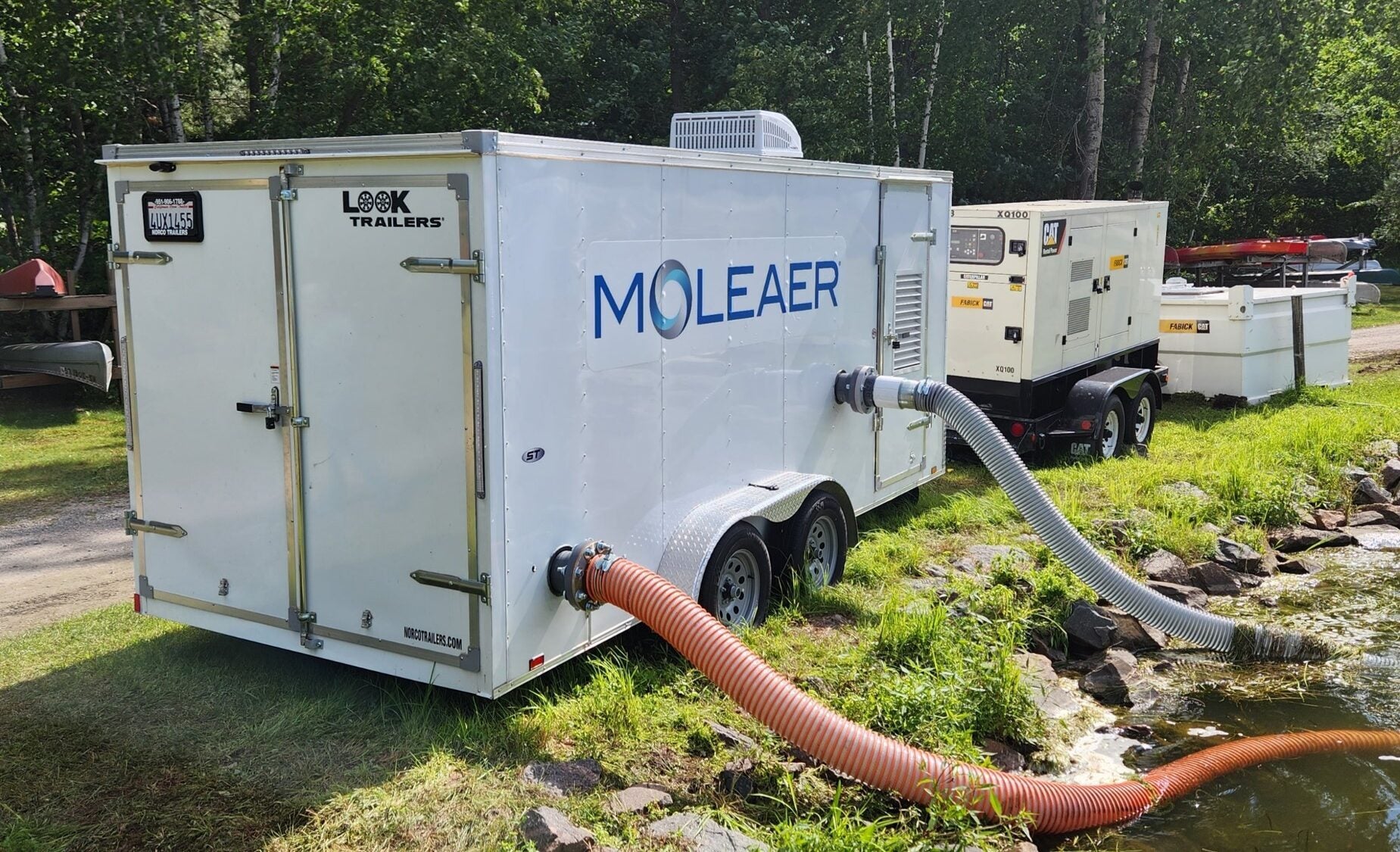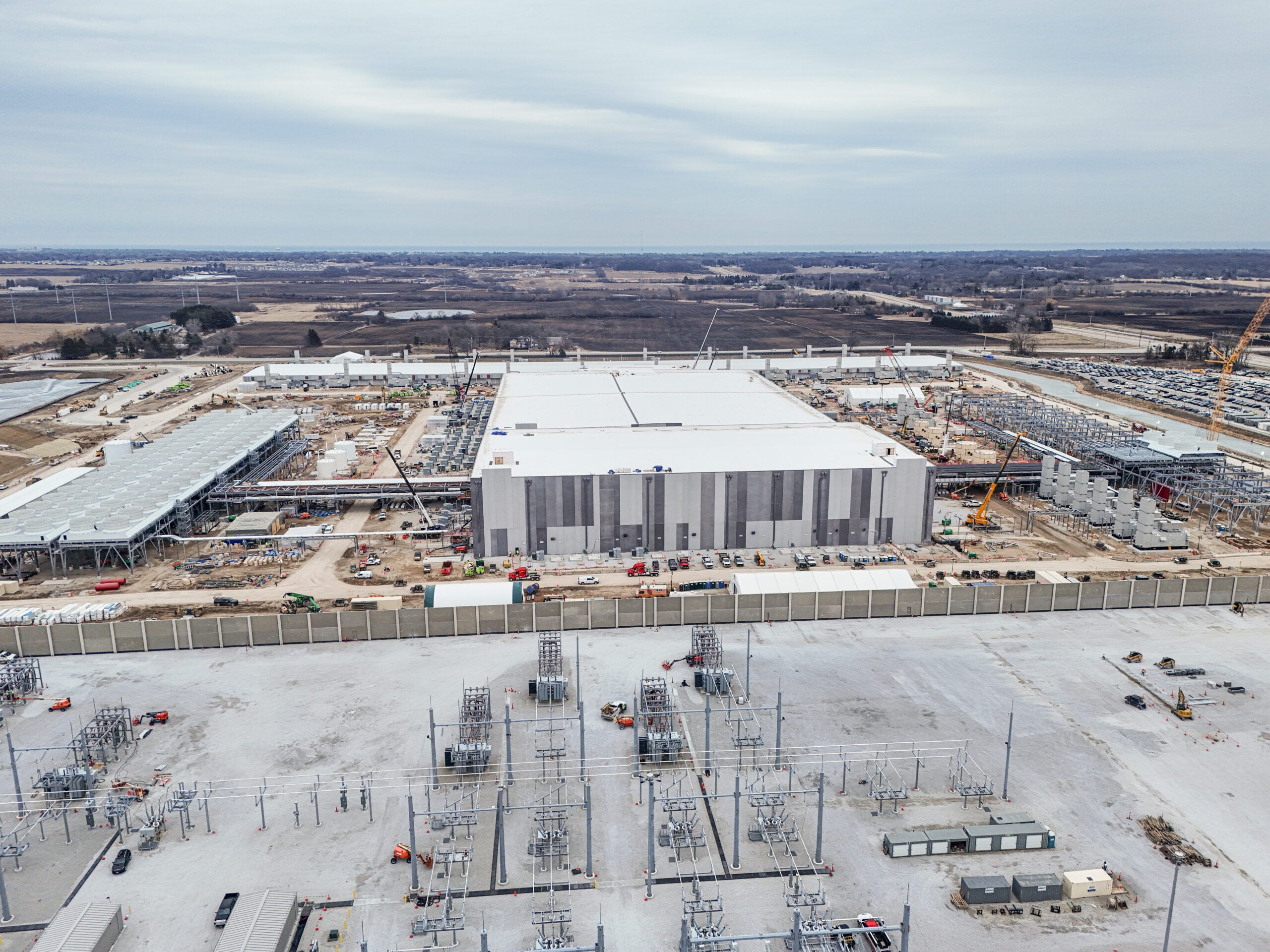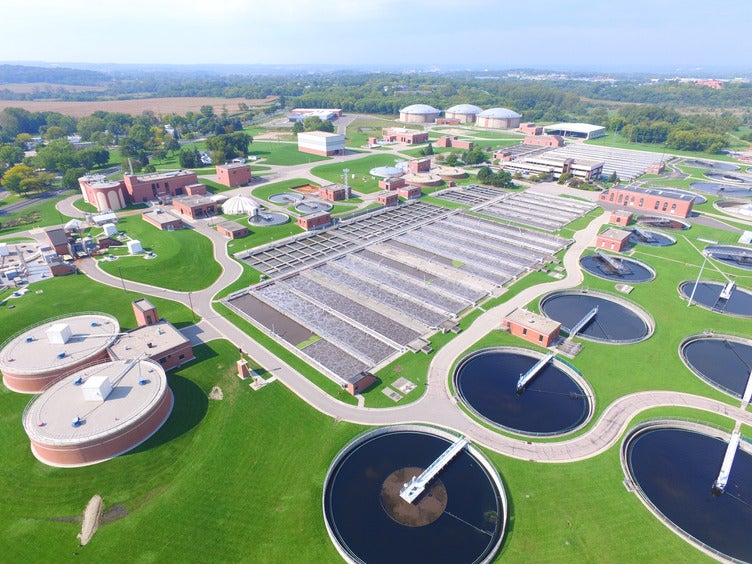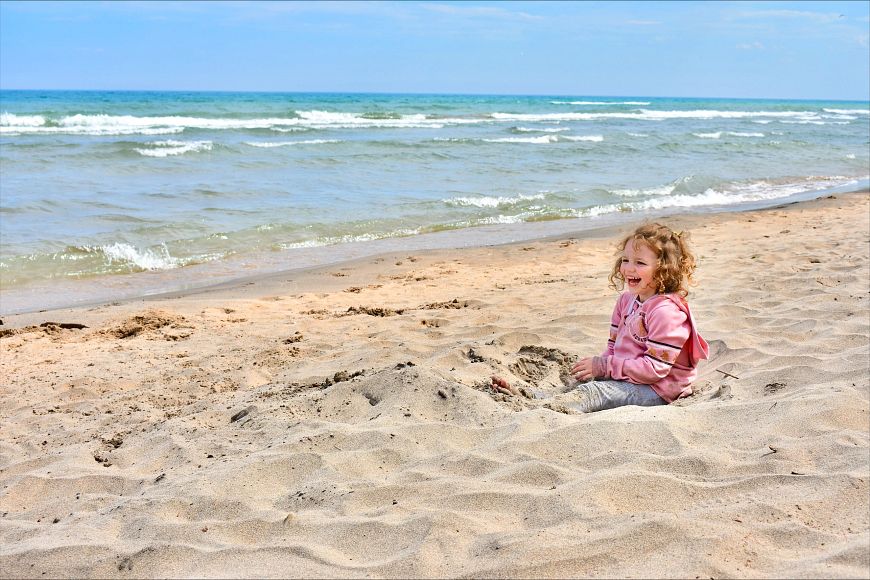Thirty-year-old Conner Andrews has swum in Lake Michigan since his childhood days vacationing in Door County.
“It was always a huge deal for me to go to the beach and have fun there and enjoy the waves and just being immersed in such a vast, vast body of water,” said Andrews, a Nashotah resident and former member of the University of Wisconsin-Madison men’s swim team.
These days he gets the same feeling swimming at Milwaukee-area beaches. But he must pick his waters and timing wisely — to avoid wading into a contaminated stew of pollutants that might swirl in some locations. That includes bacteria-laden stormwater and sewage flowing into local waterways by the millions of gallons.
News with a little more humanity
WPR’s “Wisconsin Today” newsletter keeps you connected to the state you love without feeling overwhelmed. No paywall. No agenda. No corporate filter.
Parts of the Milwaukee area rely on a combined sewer system to collect stormwater and sewage for treatment. But increasingly heavy rains can overwhelm the sewers, sending diluted but nevertheless untreated waste into local rivers and Lake Michigan.
The overflows hinder locals who like to fish and swim. And they can contribute to beach closures and make people sick.
The wastewater flows intensified in 2018, even as the Milwaukee Metropolitan Sewerage District spends millions of dollars on a plan to eliminate overflows by 2035, state data obtained by Wisconsin Public Radio show.
In 2018, the agency overseeing Milwaukee’s system, which serves 1.1 million people and 28 communities, saw six combined sewer overflows, the most events since 1999. Those overflows sent 1.2 billion gallons of stormwater and untreated sewage into rivers, canals and a stream that drain into Lake Michigan.
Milwaukee’s latest discharges come after the sewerage district spent $2.3 billion on pollution abatement in the 1980s and ’90s, including construction of what is now a 28.5-mile tunnel system to cut overflows into Lake Michigan.
The city is not alone in grappling with overflows.
Along Lake Superior’s south shore in Ashland, population 8,000, some 15 million gallons of stormwater and partially untreated sewage overwhelmed the city’s system during just one 2018 storm. It was part of a statewide spike in overflows that year.
Wisconsin in 2018 saw its most overflow events since 2010, with increasing volumes of discharged waste, state Department of Natural Resources data show.
Experts say the problem plagues communities across the Great Lakes, a drinking water source for 48 million people in the United States and Canada — including about 867,000 residents in Milwaukee and the surrounding region.
Driving the spike: intensifying rainfall due to climate change.
Investment at all levels of government has fallen short in addressing aging sewer systems overwhelmed by the increasing flows.
“We’ve got a lot of work to do,” said Joel Brammeier, president and CEO of the nonprofit Alliance for the Great Lakes. “Combine that with the fact that we’re seeing more extreme storms across the Great Lakes region, and you’ve got a recipe for some serious problems.”
Andrews has sought to draw attention to Milwaukee’s water quality pollution problems — and any progress — in a novel way. He helped organize the Cream City Classic, in which contestants swim a 1.5-mile portion of the Milwaukee River that mixes with Lake Michigan. That includes a stretch listed as a Great Lakes pollution hotspot, with toxic contamination including heavy metals from old industrial uses and sewer overflows.
Organizers held the first race in August 2018, specifically choosing that time when overflow-fueling rainfall was thought to be less likely.
“We still need to test the water to make sure that it’s clean enough (to swim in),” Andrews said.
Heavy rains have not thwarted the race in its first two years, but Andrews said he would not be surprised if that happens one day. Less than three weeks after the 2018 race, for instance, intense rainfall sent nearly 395 million gallons of stormwater and sewage into the Milwaukee River and other local waters.
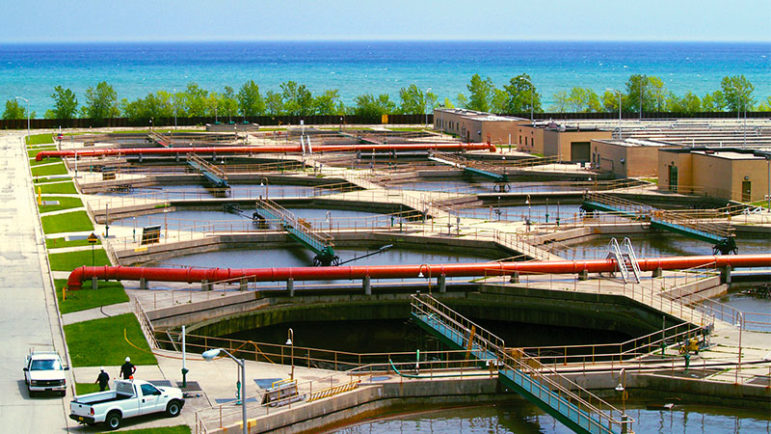
Sewage Surge Follows Decades Of Progress
As Wisconsin’s largest city, Milwaukee’s sewage system leads in wastewater releases.
In 2018, it discharged more than eight times more waste than systems in the rest of the state combined, due to wet weather, according to DNR data.
Milwaukee’s latest sewage surge into Lake Michigan follows decades of major progress on the issue.
About 8 billion to 9 billion gallons once overflowed from Milwaukee’s combined sewer system each year, even prompting the state of Illinois to sue the city for “nuisance” discharges. That was before the sewerage district started building its Deep Tunnel in the 1980s, a 521-million gallon storage system 300 feet underground that collects wastewater and stormwater until it can be treated and discharged.
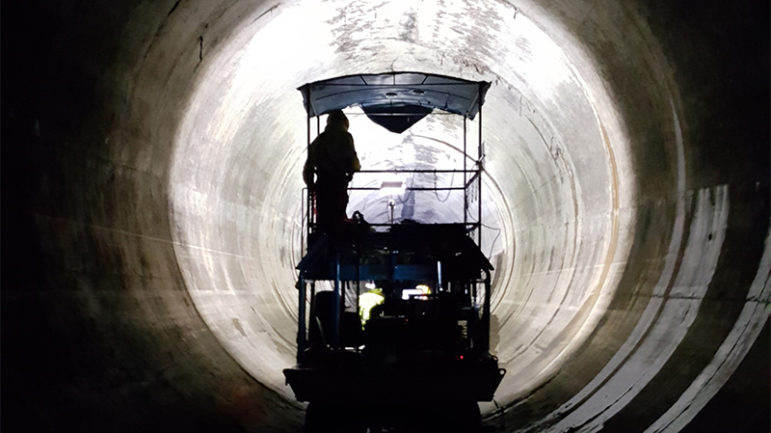
The tunnel, built in three phases, dramatically cut overflows after 1994, the first full year its initial 19.4-mile phase went into service. It helps the district treat more than 98 percent of its wastewater in a typical year, keeping at least 128 billion gallons of polluted water out of Lake Michigan.
But increasingly heavy rains are now adding more stress to the city’s sewer system.
“Clearly, there is a link between heavy rainfall events and (sewer overflows),” said Adrian Stocks, DNR water quality bureau director.
The Milwaukee sewerage district’s two wastewater plants collectively treat up to 600 million gallons of stormwater and sewage each day. But just one inch of rain across the district’s 411 square-mile service area equals more than 7 billion gallons of water.
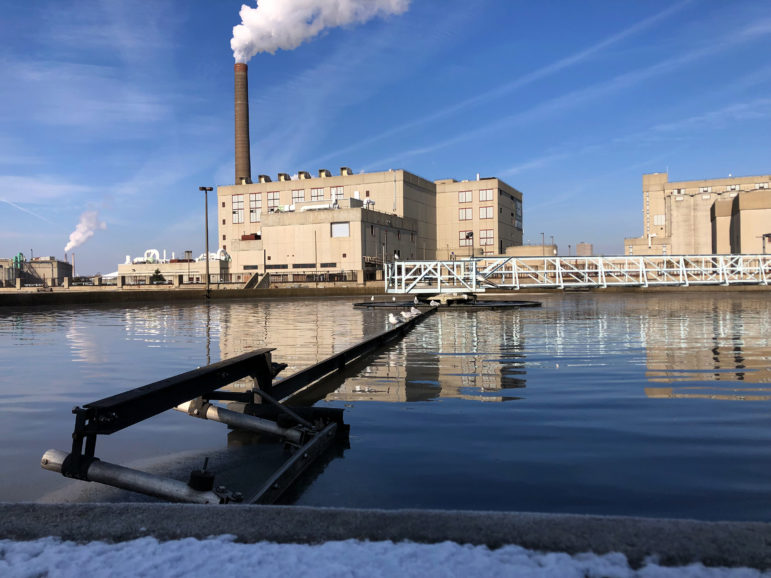
“It’s when you get two inches of rain in 20 minutes that it overwhelms the sewer system,” said Bill Graffin, the district’s spokesperson. “You’re slamming so much water into the sewers and the tunnel and the treatment plants that it’s sometimes not possible to keep up with all of it.”
Steve Vavrus, senior scientist with the University of Wisconsin-Madison’s Nelson Institute Center for Climatic Research, said climate change is driving Wisconsin’s record rainfall. Last year was the wettest in the state’s recorded state history, while 2018 was third-wettest, according to data from the Midwestern Regional Climate Center that dates back to 1895.
“There’s generally more moisture to tap when the weather systems are favorable for rainfall or snowfall,” said Vavrus. “When we do get rain or snow, it tends to be heavier than it used to.”
Excluding Milwaukee, Wisconsin communities in 2018 discharged 150 million gallons of sewage and stormwater during 388 overflow events. That was the highest volume since 2010, the fifth-wettest year on record.
As of October 2019, 359 million gallons overflowed from those communities’ systems, while Milwaukee discharged more than 500 million gallons into waterways. And that was in a year that the Milwaukee district captured and cleaned a record 85.6 billion gallons of water.
“So, basically, we captured and cleaned 99.3 percent of every drop of water that entered the regional system,” said Graffin.
Engineers traditionally use historical rainfall data when designing sewer systems and other infrastructure, according to a 2011 report on Wisconsin’s changing climate. That makes those systems vulnerable to increasingly intense rains.
“You base (design) on what the past has been in terms of heavy rainfall or snow water melt events,” Vavrus said. “But, if that changes, then suddenly maybe you’ve under-designed for the capacity that you need.”
Even now, engineers rarely wrap climate projections into infrastructure design, according to the National Climate Assessment, a major federal government report.
Public Health Threat
Climate scientists expect the region’s rains will only intensify as worldwide carbon dioxide emissions speed earth’s warming. By mid-century, Milwaukee could see up to 20 percent more untreated waste flowing into waterways without any changes to its current wastewater system, according to research by Sandra McLellan, a professor with the School of Freshwater Sciences at UW-Milwaukee. That could send more pathogens into the water.
“Instead of that happening once a year, it’s going to happen two or three times a year,” she said. “When it happens in spring and during the swimming season, that’s when people can be exposed to that water.”
In one extreme 1993 case, the waterborne-parasite cryptosporidium sickened an estimated 403,000 people in a five-county area around Milwaukee, according to the American Journal of Public Health. Later research linked 54 deaths to the outbreak, mostly AIDS patients.
The outbreak followed heavy rainfall, and experts speculated that human sewage and waste from slaughtered livestock and other animals contributed to the outbreak.
Milwaukee has invested $508 million in treatment upgrades and monitoring to prevent a future outbreak. But other communities remain vulnerable to pollution caused by heavy rains and runoff.
In a 2018 study, McLellan and other researchers found that gastrointestinal pathogens are “widespread in urban waterways following rainfall and 10-fold higher following (combined sewer overflows).” This creates “exposure routes through recreational and drinking water,” the researchers found.
While water treatment plants are designed to remove those pathogens, the 1993 Milwaukee outbreak “illustrates the consequences of failures in this protective barrier,” the researchers concluded.
Beach Closures Bring ‘Grief’ And ‘Sadness’
Researchers are increasingly flagging high levels of E. coli at beaches in Milwaukee and elsewhere along Wisconsin’s Great Lakes shorelines. The bacteria arrive in human, bird and animal feces, and it can sicken those who ingest it. The bacteria have triggered beach closures and advisories that have spanned more than 60 percent of summer days at Milwaukee’s South Shore Beach.
That beach and Maslowski Beach in Ashland are among those along the shorelines most prone to closure from unsafe swimming conditions, according to a July 2019 report from the advocacy group Environment America.
The contamination worries Melodie Phipps, who lives in Ashland. She loved to walk barefoot along the sandy shoreline of Maslowski Beach and swim in Lake Superior’s Chequamegon Bay. But that was before she learned of the city’s struggles with its aging infrastructure and sewer overflows. Now, she steers clear of the water.
[[{“fid”:”1122956″,”view_mode”:”embed_landscape”,”fields”:{“alt”:”Melodie Phipps stands at Lake Superior’s Maslowski Beach”,”title”:”Melodie Phipps stands at Lake Superior’s Maslowski Beach”,”class”:”media-element file-full”,”data-delta”:”2″,”format”:”embed_landscape”,”alignment”:”right”,”field_image_caption[und][0][value]”:”%3Cp%3EMelodie%20Phipps%20stands%20at%20Lake%20Superior%E2%80%99s%20Maslowski%20Beach%20in%20Ashland%2C%20Wis.%2C%20on%20Aug.%2010%2C%202019.%20%3Cem%3EDanielle%20Kaeding%2FWPR%3C%2Fem%3E%3C%2Fp%3E%0A”,”field_image_caption[und][0][format]”:”full_html”,”field_file_image_alt_text[und][0][value]”:”Melodie Phipps stands at Lake Superior’s Maslowski Beach”,”field_file_image_title_text[und][0][value]”:”Melodie Phipps stands at Lake Superior’s Maslowski Beach”},”type”:”media”,”field_deltas”:{“2”:{“alt”:”Melodie Phipps stands at Lake Superior’s Maslowski Beach”,”title”:”Melodie Phipps stands at Lake Superior’s Maslowski Beach”,”class”:”media-element file-full”,”data-delta”:”2″,”format”:”embed_landscape”,”alignment”:”right”,”field_image_caption[und][0][value]”:”%3Cp%3EMelodie%20Phipps%20stands%20at%20Lake%20Superior%E2%80%99s%20Maslowski%20Beach%20in%20Ashland%2C%20Wis.%2C%20on%20Aug.%2010%2C%202019.%20%3Cem%3EDanielle%20Kaeding%2FWPR%3C%2Fem%3E%3C%2Fp%3E%0A”,”field_image_caption[und][0][format]”:”full_html”,”field_file_image_alt_text[und][0][value]”:”Melodie Phipps stands at Lake Superior’s Maslowski Beach”,”field_file_image_title_text[und][0][value]”:”Melodie Phipps stands at Lake Superior’s Maslowski Beach”}},”link_text”:false,”attributes”:{“alt”:”Melodie Phipps stands at Lake Superior’s Maslowski Beach”,”title”:”Melodie Phipps stands at Lake Superior’s Maslowski Beach”,”class”:”media-element file-embed-landscape media-wysiwyg-align-right”,”data-delta”:”2″}}]]”I feel a huge grief — huge sadness and a longing on a hot day when the humidity is 95 percent and you’re just sweating and it’s sunny,” she said.
Researchers at Northland College in Ashland regularly sample water quality along the city’s beaches. More than 30 percent of samples they collected between 2014 and 2016 exceeded federal water quality standards for E. coli, according to a 2017 report. The bacteria stemmed from a variety of sources, researchers noted.
In many cases, seagulls appear to be the most dominant contributor, said Matt Hudson, associate director with the Mary Griggs Burke Center for Freshwater Innovation at Northland.
McLellan said similar studies have shown high levels of E. coli at Milwaukee beaches come mostly from shoreline runoff and wildlife — not sewer overflows. But researchers worry climate change-induced overflows will only send more pollution into waterways, and the discharges are a prime source for the pathogens most likely to cause illness.
“If I had to say what’s the most serious pollution sources, it’s sewage and any kind of human contamination,” McLellan said.
Overwhelming Old Systems
The growing stress on wastewater systems comes as governments struggle to fund their upkeep.
In 2012, Wisconsin’s roughly 600 publicly owned wastewater systems reported needing a collective $6.3 billion in extra investment to meet federal water quality goals — nearly half for pipeline construction or repair and managing stormwater. Systems nationwide needed $271 billion in investment, according to the U.S. Environmental Protection Agency.
That includes Ashland, which reported needing about $10 million to upgrade its separate sanitary sewer and stormwater systems. More than one-third of its sewer pipes are more than 50 years old, and nearly half are past their useful life, said John Butler, the city’s public works director.
“The rate of replacement or repair over the recent history hasn’t kept up with the rate at which it’s aging,” he said.
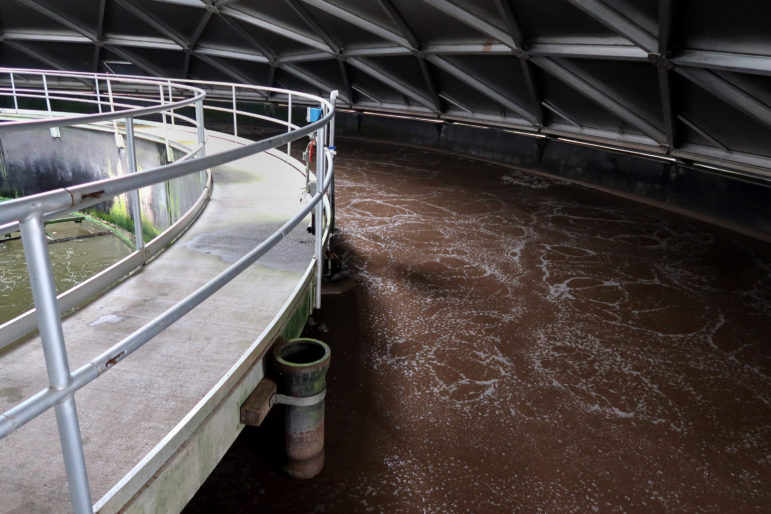
Ashland’s wastewater treatment plant can handle up to 2,700 gallons per minute, or about 3.8 million gallons a day. But heavy rain events can increase flows 12-fold, overwhelming the plant. More than 6 inches of rain hit Ashland during Father’s Day weekend 2018, sending 15 million gallons of wastewater into Lake Superior.
Ashland’s overflows happen when water seeps into cracked pipes or into connections between the stormwater and sanitary sewer systems, Butler said.
Additionally, some private property owners might unknowingly contribute to the problem, said Valerie Damstra, operations manager of the Mary Griggs Burke Center.
Some have downspouts, storm drains or sump pumps illegally connected to sewer pipes, adding additional stormwater to the municipal system.
City officials have held public forums about how to disconnect from sewer pipes, but Ashland — like other small communities — has little funding to help homeowners make those fixes.
“Some of these communities are doing the best they can with the resources they have,” said Stocks, of the DNR.
Pricey Fixes
Since 1991, the DNR has awarded more than $4.6 billion in loans and assistance for roughly 1,000 sewer and stormwater projects, with about 30 percent of funding going to Milwaukee, according to the state Legislative Fiscal Bureau.
Jim Ritchie, DNR environmental loan section chief, said funding requests are only increasing as old wastewater systems deteriorate.
Brammeier, of the Alliance for the Great Lakes, said President Donald Trump and Congress must find a way to unlock funding to fix the nation’s water woes.
About 96 percent of U.S. spending on water and wastewater projects comes from state and local governments, according to the Congressional Budget Office. The federal government chipped in billions for water and wastewater programs in the 2019 fiscal year, but its investment has declined in recent years amid competing priorities in Washington.
Both Republican and Democratic leaders in recent years have proposed a dramatic boost in federal infrastructure spending — including for water upgrades, but Congress has yet to approve a major funding overhaul.
Meanwhile, local governments are forging ahead with their own limited resources.
[[{“fid”:”1123006″,”view_mode”:”embed_portrait”,”fields”:{“alt”:”green infrastructure”,”title”:”green infrastructure”,”class”:”media-element file-embed-portrait media-wysiwyg-align-right”,”data-delta”:”8″,”format”:”embed_portrait”,”alignment”:”right”,”field_image_caption[und][0][value]”:”%3Cp%3EAs%20part%20of%20its%20green%20infrastructure%20program%2C%20Milwaukee%20subsidizes%20projects%20like%20the%20one%20in%20this%20parking%20lot%20made%20of%20porous%20paving%20bricks%20at%20Dead%20Bird%20Brewing%20Co.%20Photo%20taken%20Jan.%207%2C%202019.%20%3Cem%3ENick%20Kocis%2FDead%20Bird%20Brewing%20%3C%2Fem%3E%3C%2Fp%3E%0A”,”field_image_caption[und][0][format]”:”full_html”,”field_file_image_alt_text[und][0][value]”:”green infrastructure”,”field_file_image_title_text[und][0][value]”:”green infrastructure”},”type”:”media”,”field_deltas”:{“8”:{“alt”:”green infrastructure”,”title”:”green infrastructure”,”class”:”media-element file-embed-portrait media-wysiwyg-align-right”,”data-delta”:”8″,”format”:”embed_portrait”,”alignment”:”right”,”field_image_caption[und][0][value]”:”%3Cp%3EAs%20part%20of%20its%20green%20infrastructure%20program%2C%20Milwaukee%20subsidizes%20projects%20like%20the%20one%20in%20this%20parking%20lot%20made%20of%20porous%20paving%20bricks%20at%20Dead%20Bird%20Brewing%20Co.%20Photo%20taken%20Jan.%207%2C%202019.%20%3Cem%3ENick%20Kocis%2FDead%20Bird%20Brewing%20%3C%2Fem%3E%3C%2Fp%3E%0A”,”field_image_caption[und][0][format]”:”full_html”,”field_file_image_alt_text[und][0][value]”:”green infrastructure”,”field_file_image_title_text[und][0][value]”:”green infrastructure”}},”link_text”:false,”attributes”:{“alt”:”green infrastructure”,”title”:”green infrastructure”,”class”:”media-element file-embed-portrait media-wysiwyg-align-right”,”data-delta”:”8″}}]]Beginning next year, Ashland plans to spend about $600,000 annually for deferred upkeep while also seeking state loans, Butler said. An EPA grant also helped the city install a grassy channel at Maslowski Beach designed to capture and treat stormwater — potentially preventing 219,000 gallons of runoff from reaching Lake Superior.
Along Lake Michigan, the Milwaukee sewerage district is pouring hundreds of millions of dollars into flood control along watersheds. It set a goal of zero overflows by 2035 by adding 740 million gallons of stormwater storage.
The district estimates it will cost at least $1.3 billion to install green roofs, rain gardens and other projects to capture water across its service area. Such “green infrastructure” is expected to save $44 million in the city’s combined sewer area when compared to building new storage capacity in the Deep Tunnel.
“The green infrastructure really helps the gray infrastructure operate more effectively, and in that case it also makes it more climate resilient,” said Kevin Shafer, the district’s executive director. “We really live by the mantra that every drop counts.”
The nonprofit Wisconsin Center for Investigative Journalism (wisconsinwatch.org) collaborates with Wisconsin Public Radio, PBS Wisconsin, other news media and the UW-Madison School of Journalism and Mass Communication. All works created, published, posted or disseminated by the Center do not necessarily reflect the views or opinions of UW-Madison or any of its affiliates.

